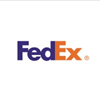Blockchain - All You Need To Know

There is more to the decentralization phenomena than algorithms, regulations, and code as blockchain technology continues to permeate nearly every sector of society, from the government to the supply chain to energy and entertainment. Alongside all of that, blockchain culture is developing, as are the groups that produce it, and numerous important media sites are keeping up with global events.
Blockchain was infused with the techno-libertarian culture during the time of Satoshi Nakamoto, a group of individuals who sought to live their lives independently of governmental and institutional control and turned to technology to accomplish so. The culture of blockchain has spread into as many subcultures as there are cryptocurrencies as blockchain and digital currencies have become household names!
What is Blockchain?
Blockchain is a decentralized, unchangeable database that streamlines asset tracking and transaction recording inside a business network. A physical asset (such as a house, car, sum of money, or plot of land) or an intangible asset (intellectual property, patents, copyrights, branding). A blockchain network allows practically anything of value to be recorded and sold, lowering risk and increasing efficiency for all parties.
Why blockchain is important?
Information is essential to business. It is ideal if it is swiftly and precisely received. Blockchain is the best technology for delivering that information because it offers real-time, shareable, and entirely transparent data that is kept on an immutable ledger and accessible only to members of a permission network. A blockchain network can track orders, payments, accounts, production, and many other things. Furthermore, since everyone has access to the same version of the truth, you can observe every facet of a transaction from start to finish, boosting your confidence and presenting you with new opportunities.
Difference between database and blockchain
In a blockchain, data is organized in a very different way than it is typically. A blockchain collects data in units called blocks, each of which contains sets of data. In order to create the data chain known as the blockchain, each completed block is sealed and connected to the one before it. Blocks have predefined storage capacities. When the chain is complete, a new block is created from each piece of information that follows that just-added block and added to the chain.
A database normally arranges its data into tables, whereas a blockchain, as its name suggests, divides its data into parts (blocks) that are tied together. This data structure intentionally produces an irreversible chronology of data when employed decentralized. A completed block is permanently sealed and put on the timeline. An accurate timestamp is assigned to each block as it is added to the chain.
How does blockchain work?
Blockchain intends to enable unaltered sharing and recording of digital information. A blockchain serves as the basis for immutable ledgers, or records of transactions because they are unchangeable and cannot be added to, subtracted from, or destroyed. This is why distributed ledger technology and blockchains both have similar names (DLT).
Long before Bitcoin became a widely utilized application in 2009, the blockchain concept was first proposed as a research project in 1991. Since then, the introduction of numerous cryptocurrencies, decentralized finance (DeFi) applications, non-fungible tokens (NFTs), and smart contracts has led to explosive growth in the use of blockchains.
Transaction Process
Source: Investopedia
Attributes of Cryptocurrency
Source: Investopedia
How is Blockchain beneficial?
More Faith
Members of a members-only network can utilize the blockchain to ensure that the information they get is accurate and timely and that only network members to whom they have explicitly authorized access will have access to their private blockchain records.
Increased Safety
All network participants must agree that the data is accurate, and since all confirmed transactions are permanently stored, they cannot be changed. A transaction cannot be deleted by anyone, not even a system administrator.
More Efficiency
The use of a distributed ledger that is shared among network users reduces the need for time-consuming record reconciliations. Additionally, a set of instructions known as a smart contract can be saved on the blockchain and carried out automatically to speed up transactions.
Types of blockchain networks
Public blockchain networks
A public blockchain, like the one used by Bitcoin, is open to everyone. Potential drawbacks include the need for a lot of computer power, a lack of transactional privacy, and inadequate security. These are crucial factors to take into account for blockchain use cases in professional contexts.
Private blockchain networks
An equivalent decentralized peer-to-peer network to a public blockchain is a private blockchain network. However, the network is controlled by a single body that oversees the shared ledger, employs a consensus method, and manages who is allowed to take part. This may significantly boost participant trust and confidence, depending on the use case. There are additional possibilities for hosting a private blockchain locally or running one behind a corporate firewall.
Permissioned blockchain networks
Often, companies that develop a private blockchain will also develop a permissioned blockchain network. It's important to keep in mind that permissions might exist on both private and public blockchain networks. As a result, the transactions and users who can join the network are restricted. Participants must get an invitation or authorization before they can participate.
Consortium blockchains
Several businesses may share in the maintenance of a blockchain. Who is permitted to submit transactions or access the data is chosen beforehand by these entities. When each partner in a business transaction needs to have authorization and share ownership of the ledger, a consortium blockchain is an ideal option.
How Are Blockchains Used?
As we now know, Bitcoin's blockchain contains blocks that include data about financial transactions. The blockchain currently hosts more than 10,000 additional cryptocurrency systems. It turns out, though, that utilizing a blockchain to record data about other types of transactions is also a secure approach.
Just a few companies that have done so include Walmart, Pfizer, AIG, Siemens, Unilever, and many more. For example, IBM created the Food Trust blockchain to trace food goods' travel paths.
Why are they doing this? E. coli, salmonella, listeria, and unintended product contamination with harmful compounds have all occurred frequently in the food industry. It has previously taken weeks to identify the cause of these outbreaks or the illness brought on by what people consume. In order to enable the food firm more readily collect all the tainted products, brands can track a food product's journey using blockchain, from its origin through each stop along the way to its delivery.
Banking and Finance
The use of blockchain in corporate processes may be particularly advantageous for the banking industry. Financial institutions are only accessible during regular business hours, usually five days each week. Because of this, if you try to deposit a check at 6 p.m. on Friday, you probably won't see the money in your account until Monday morning. Even if you make your deposit during business hours, it could still take one to three days for the transaction to be validated because banks must settle a huge number of transactions every day. But blockchain is always in use.
Customers can anticipate that banks using blockchain will process their transactions in as low as 10 minutes, which is essentially the time it takes to add a block to the blockchain, regardless of the day of the week or a holiday. Blockchain technology has given banks the capacity to securely and quickly move money between businesses.
Currency
Blockchain is the underlying technology for cryptocurrencies like Bitcoin. The US currency is under the Federal Reserve's control. Technically, in this centrally controlled system, a user's data and money are at the mercy of their bank or government. If a customer's bank gets hacked, their confidential information is at risk. If their bank collapses or if they live in a country with an unstable government, the value of the client's money could be in danger. In 2008, taxpayer money was used to bail out a few failing banks in part. These are the issues that motivated the original conception and creation of Bitcoin.
Blockchain makes it possible for cryptocurrencies like Bitcoin and others to operate decentralized by distributing their operations across a network of computers. This eliminates countless administrative and transaction costs in addition to reducing risk.
Healthcare
Healthcare professionals can use blockchain to securely store their patients' medical records. Once a medical record has been established and signed, it can be written into the blockchain, providing patients the assurance that the record cannot be changed. These private, sensitive health records might be encrypted and saved on the blockchain with a secret key so that only authorized users can access them.
The Bottom Line
With various current real-world applications for the technology being deployed and investigated, blockchain is finally establishing itself, thanks in large part to bitcoin and cryptocurrencies. As an investor in the nation, everyone is talking about blockchain, which has the potential to eliminate intermediaries while boosting accuracy, efficiency, security, and cost-effectiveness in business and government operations.
As we prepare to enter the third decade of technology, it is no longer a question of if but rather when older enterprises will adopt blockchain technology. Assets are currently being tokenized and NFTs are becoming more and more common. Over the coming decades, blockchain will significantly expand.
in Environment India and in 1 more group
You may be interested in these jobs
-
Store Manager
Found in: Talent IN C2 - 14 hours ago
SRI DEVI ASSOCIATES (INDIA) PRIVATE LIMITED Gwalior, India Full timeWe are looking for a results driven retail Store Manager to be responsible for the overall store management. The successful candidate will be able to enhance customer satisfaction, meet sales and profitability goals and manage staff effectively. Candidates will have the most succ ...
-

Adani Group
Found in: beBee S2 IN - 14 hours ago
iimjobs Gurgaon/Gurugram, India Full timeKey Responsibilities: · Market Analysis and Opportunity Identification: · - Conduct comprehensive market research to identify potential customers, emerging trends, and competitive landscapes within both POS and commerce sectors. · - Analyse market data to formulate strategies for ...
-
Business Product Analyst II
Found in: Talent500 IN C2 - 14 hours ago
FedEx Hyderabad, IndiaJob Requirements: · Under limited supervision, define and clearly articulate requirements (user stories) and acceptance criteria (use cases). · Assists in managing requirements and prioritization within the product backlog through business value ROI, alignment with product strate ...
 PRIVATE LIMITEDuO6gLOGO.SRI DEVI ASSOCIATES (INDIA) PRIVATE LIMITED)

Comments